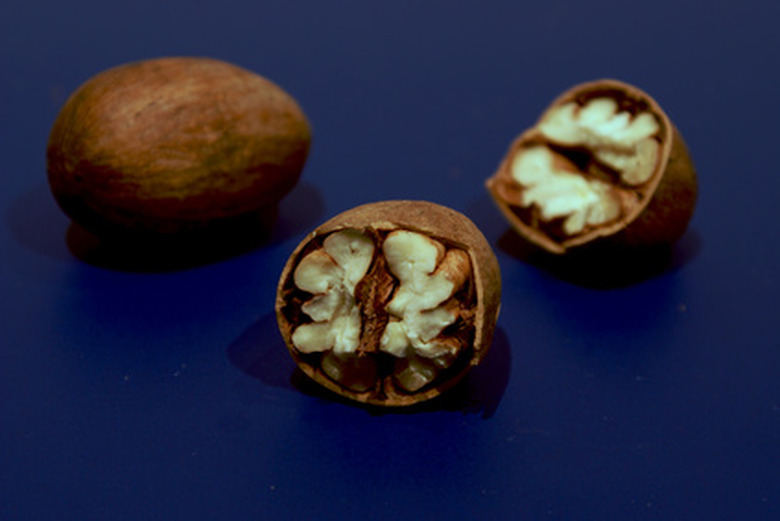What Nut Trees Grow Well In South Mississippi?
The southern part of Mississippi, which includes Biloxi and the Gulf Coast, is located in Zone 8 on the U.S. Department of Agriculture Plant Hardiness Zone Map. This area has mild winters and hot, humid summers. Rainfall can reach more than 50 inches annually. Winter temperatures may dip to 10 degrees F, but frosts and extended periods of cold weather are rare.
The most well-known nut tree in the South is the pecan, which grows well in South Mississippi. Other nut trees are also suited for the climate, but may be susceptible to illness. Most nut trees bear nuts in winter.
- The southern part of Mississippi, which includes Biloxi and the Gulf Coast, is located in Zone 8 on the U.S. Department of Agriculture Plant Hardiness Zone Map.
- The most well-known nut tree in the South is the pecan, which grows well in South Mississippi.
Chinese Chestnut
American chestnuts (Castanea denata) have become nearly extinct due to chestnut blight, but the Chinese Chestnut (C. mollissima) is a suitable replacement that will grow well in South Mississippi. This tree, however, has strong-smelling pollen, and should be used in an area where the smell would not be noticeable. Chinese Chestnut trees, which can grow to 60 feet and have a spread of up to 40 feet, are dense trees that offer good shade. The trees produce small, white flowers in early summer before giving way to soft nuts in a prickly skin.
Chinese Chestnuts should be planted in full sun and require regular water. These trees prefer neutral to acidic soil.
Pecans
Native to the southeastern U.S., the pecan (Carya illinoenis) is prevalent in South Mississippi, and the so-called "papershell" varieties grow particularly well in the hot, humid Mississippi summers. Pecan trees, which can grow to 70 feet, have graceful trunks and high branches covered with long leaflets that may be up 7 inches. These trees should be planted in well-draining soil in a sunny spot and require regular water.
- American chestnuts (Castanea denata) have become nearly extinct due to chestnut blight, but the Chinese Chestnut (C. mollissima) is a suitable replacement that will grow well in South Mississippi.
- This tree, however, has strong-smelling pollen, and should be used in an area where the smell would not be noticeable.
Papershell pecans have thin skins and are easier to peel than other varieties. These nuts need 210 growing days to ripen. "Caddo," "Elliot" and "Houma" are among the papershell varieties.
Walnuts
Black (Juglans nigra) and English (J. regia) walnuts are suitable for growth in South Mississippi. Both trees produce hard-shelled nuts, though the English variety is the more familiar nut that is sold in retail stores. Both trees should be planted in full sun and get regular water.
The Black Walnut tree can grow to 150 feet and is native to much of the eastern and southern U.S. This tree is high-branched and may be susceptible to bacterial infections in South Mississippi's hot, humid summers.
- Papershell pecans have thin skins and are easier to peel than other varieties.
- The Black Walnut tree can grow to 150 feet and is native to much of the eastern and southern U.S.
- This tree is high-branched and may be susceptible to bacterial infections in South Mississippi's hot, humid summers.
The English Walnut tree can grow to 60 feet and is native to Asia and Europe. This tree is fast-growing and is most often planted commercially in California, Oregon and Washington. In South Mississippi, these trees are susceptible to bacteria and blight, so check with your local nursery to select the most suitable cultivar.
References
- "Sunset National Garden Book;" the editors of Sunset Books and Sunset Magazine; 1997
